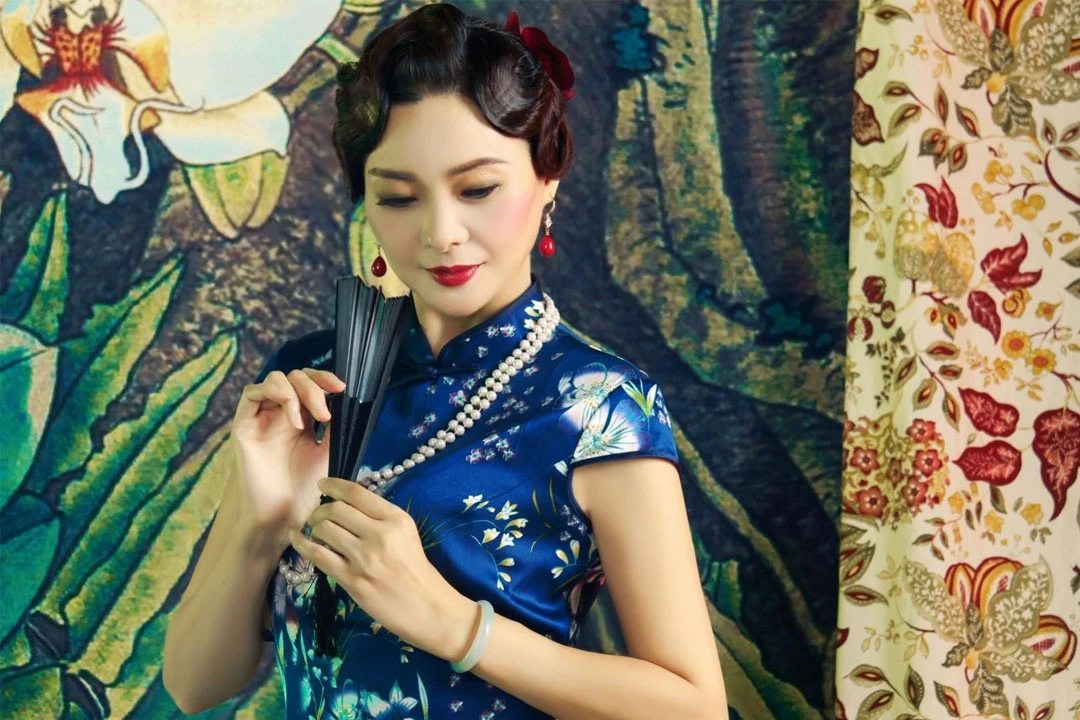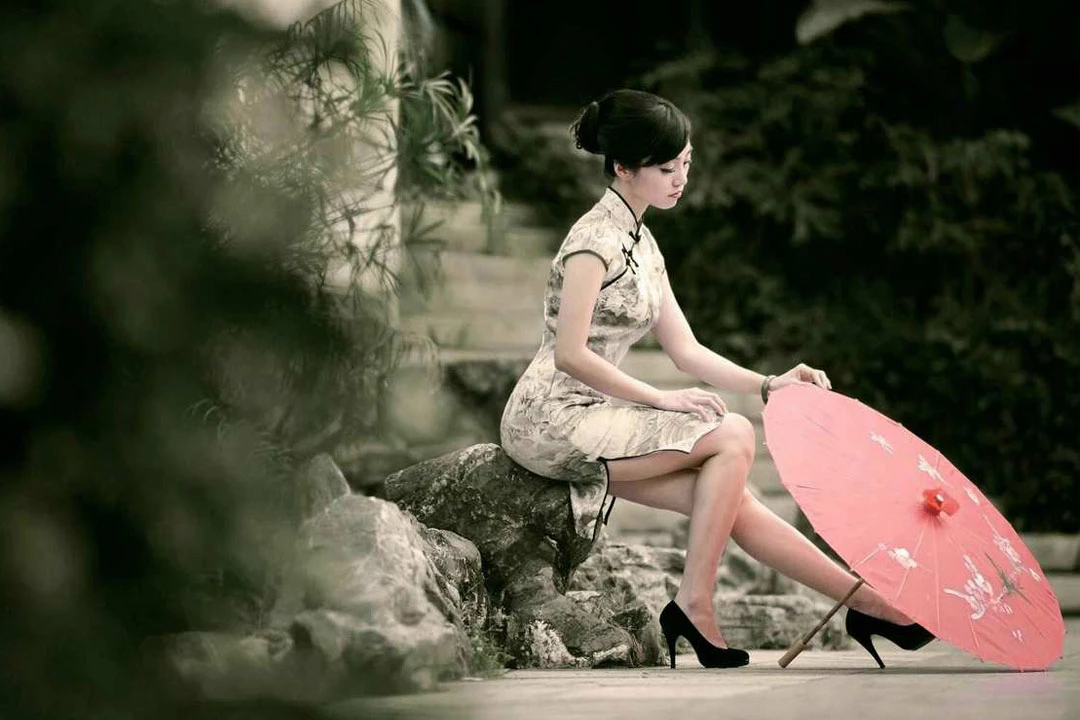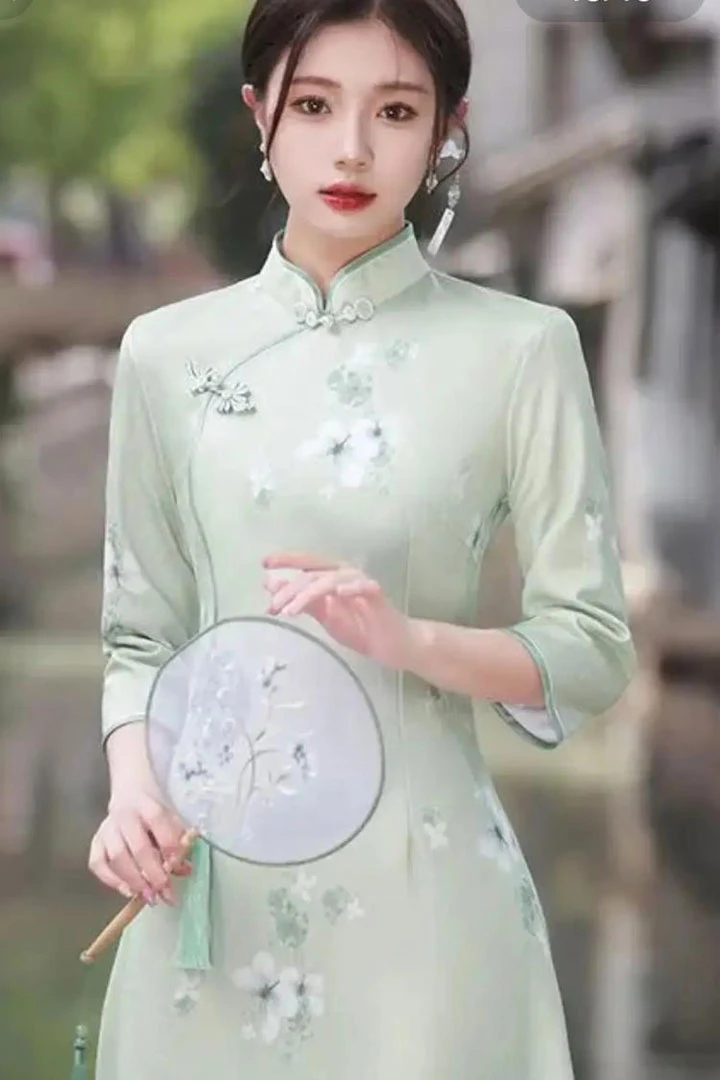A Lifetime Devoted to the Art of Qipao
In the bustling heart of New Taipei City, a small studio stands as a testament to one woman's lifelong dedication to the art of qipao. Yuan Nienhua (袁念华), now 74, has spent decades breathing new life into this iconic Chinese garment, weaving together threads of tradition and innovation to create pieces that speak to women across generations and across the Taiwan Strait.
Yuan's journey with qipao began on her 10th birthday when her father, a mainland Chinese immigrant to Taiwan, gifted her a small qipao. This seemingly simple gesture was laden with cultural significance - a tangible link to their ancestral home in Jiangsu and a symbol of Chinese femininity. Yet for young Yuan, the garment initially felt cumbersome and unattractive.
"My father was always homesick," Yuan recalls. "Making me wear qipao was his way of holding onto our roots. But at the time, I found it impractical and unflattering."
This early resistance sparked a creative fire in Yuan. Determined to make the qipao more appealing, she began experimenting with alterations, utilizing the embroidery skills she had learned from her mother. Little did she know that these childhood attempts at "improving" the qipao would set the course for her life's work.
As Yuan grew older, her relationship with the qipao transformed from reluctance to reverence. She came to appreciate the garment's ability to showcase the elegant curves and graceful demeanor of Chinese women. This appreciation blossomed into a full-fledged passion, leading her to open multiple shops in Taipei offering custom-made qipao.
Yuan's approach to qipao-making is a meticulous, all-encompassing process. From taking measurements to designing, cutting, sewing, embroidering, and decorating, she oversees every step with the precision of an artist crafting a masterpiece. "Each qipao is a work of art," Yuan explains. "Every button, every trim, every auspicious symbol must be sewn by hand. There are no shortcuts."
This dedication to craftsmanship is matched only by Yuan's commitment to innovation. Recognizing the declining popularity of traditional qipao in Taiwan due to its perceived impracticality and high cost, Yuan embarked on a mission to create "improved qipao" that would appeal to modern women while retaining the essence of the garment.
"The qipao has always been a product of cultural fusion, evolving with the times," Yuan notes. "Innovation is in its DNA."
Bridging Tradition and Innovation in Chinese Fashion
Yuan's improved qipao designs are tailored to address common concerns. For those with uneven shoulders, she adds subtle padding. For curvier figures, she incorporates cleverly placed patterns to create a flattering silhouette. "A well-made qipao should fit perfectly and be designed specifically for the wearer's body type, personality, and bearing," she insists.
To attract younger wearers, Yuan infuses contemporary elements into her designs. She creates two-piece ensembles with qipao-inspired tops paired with trousers for ease of movement. She incorporates modern embellishments like feathers and tassels for those seeking a more fashion-forward look. For children, she adds practical touches like zippers and playful decorations.
Yuan's efforts extend beyond her studio. Recognizing the dwindling number of qipao makers and the lack of interest among younger generations in learning the craft, she has taken on the role of cultural ambassador. In the 1990s, she founded several organizations dedicated to promoting qipao culture and has been organizing an annual qipao design competition for college students for the past 30 years.
"The qipao represents the traditional dress of Chinese women. It's our cultural pride," Yuan says. "Promoting qipao culture and passing on these skills has become my mission."
Fostering Cultural Exchange Through the Language of Clothing
In recent years, Yuan has turned her attention to mainland China, where she sees a resurgence of interest in traditional clothing among young people, partly fueled by popular period dramas. She has led numerous delegations to various parts of mainland China, seeking to preserve endangered embroidery techniques and foster cultural exchange.
"The qipao is a common language between Taiwan and the mainland," Yuan reflects. "Wearing the clothing of our Chinese heritage and promoting our own culture is only natural."
As she approaches her 75th year, Yuan shows no signs of slowing down. Her dream of seeing a beloved qipao in every Chinese woman's wardrobe keeps her motivated and active in her craft. With each stitch, she not only preserves a piece of cultural heritage but also adapts it for future generations, ensuring that the qipao, like its signature mandarin collar, will continue to stand tall and elegant for years to come.
Yuan Nienhua's story is more than just a tale of personal passion; it's a narrative that encapsulates the evolution of Chinese culture in a rapidly changing world. Through her work, she demonstrates how traditional arts can remain relevant and vibrant when approached with creativity and respect. As the silk threads of her qipao weave together past and present, they create a tapestry that tells the ongoing story of Chinese identity, bridging generations and geographies with every carefully placed stitch.



